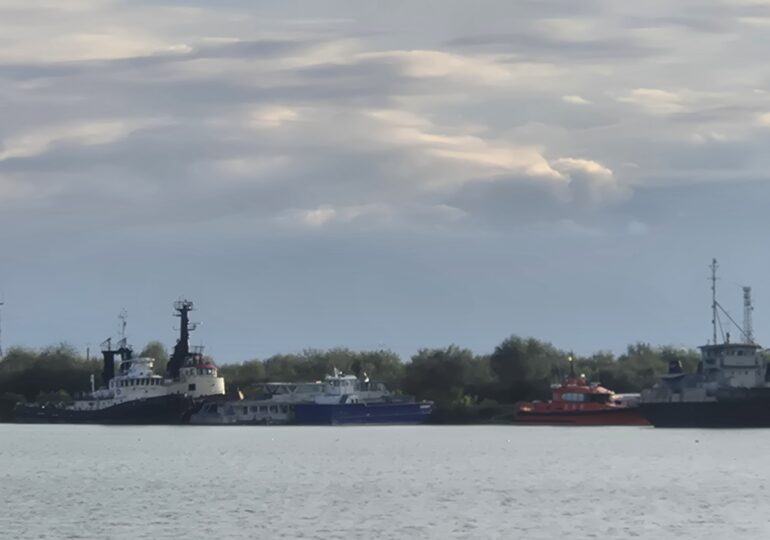After decades of economic isolation, Sulina is preparing to become an active port on the Black Sea again. Two infrastructure projects carried out by the Sulina Free Zone Administration (AZL) are nearing completion and will transform the city into a strategic logistics hub capable of receiving large-tonnage ships and attracting industrial investments.
„In 15 years, we can reach 13 million tons of goods and 300 direct jobs,” says Dragoș Ioniță, the director of AZL.
For Sulina, a city that currently relies mainly on seasonal tourism, the project means the chance of a stable economy, functional all year round, and a return to Europe’s maritime map.
„We are over 94% in terms of implementation for the project in perimeter I and over 85% for the one in perimeter II. At the end of the year, we will be ready with both, if unforeseen elements or exceptional situations do not arise,” Dragoș Ioniță added.
### Dredging the Sulina bar: the key to maritime revival
One of the main investments targets the dredging of the Sulina bar – the area where the canal flows into the Black Sea – to allow access for large vessels. „Studies have been conducted on the soil expertise to assess whether the shore defenses and submerged embankments can withstand additional dredging. The expertise confirmed this. We will have 11 meters in the Sulina bar,” explained Ioniță.
The next step is the „number 3 project,” through which AZL aims to dredge the large basin to a depth of 11.5 meters – the level at which the port operated in the 1980s. „The entire basin was inventoried as an archaeological site. We conducted scanning works of the entire basin according to the requirements of the Regional Culture Commission. All present ships, sunken wrecks were identified. We know very well that we can attack the northern part of the basin, dredge it, and verticalize the quay,” he added.
### From seasonal tourism to a permanent economy
The two projects will fundamentally change the economic structure of the city of Sulina, which is currently largely dependent on tourism. „It means horizontal development. Jobs for 12 months a year, which is currently difficult. Sulina lives on tourism, and tourist activities only last 6-7 months. People want to come back home. They have clean air, the sea, the delta, but they need stable jobs. These projects will provide exactly that,” stated the director of AZL.
According to a study conducted by international experts through the European Bank for Reconstruction and Development, the Sulina port could generate 300 direct jobs and a volume of 13 million tons of goods annually in the next 15 years. „These are fabulous figures,” says Ioniță.
### Sulina back on the map of European ports
The Sulina port will have platforms of over 28,000 m², a new docking quay, support pillars for hydro-technical infrastructure, and a 650-meter road connecting the industrial area to the city. „There were some obstacles that kept the builders back a bit, but they mobilized very well and found solutions so as not to lose more time,” said Ioniță.
Regarding financing, Ioniță specified that the project is not in danger: „At the moment, due to the progress we have, we are somewhat exempt from this risk.”
Ioniță is optimistic: „Can we say that Sulina will be put on the map of European ports? Definitely, yes!”
### A port with a future
Through these investments, Sulina regains its identity as a city-port at the confluence of the Danube with the Black Sea, a place where tourism and the economy can coexist. „People want to come back home, but they need consistency. That’s what these projects will do,” said Ioniță.
Representatives of AZL emphasize that the investments are made with non-repayable European funds, through the Major Infrastructure Operational Program (POIM), and that the works will be fully completed by the end of 2025, according to the schedule agreed with the management authorities.
Thus, if the works continue according to plan, by the end of the year, Sulina will have a modernized port, capable of competing with regional hubs on the maritime Danube and bringing new economic perspectives for the entire Delta region.
G.P.

